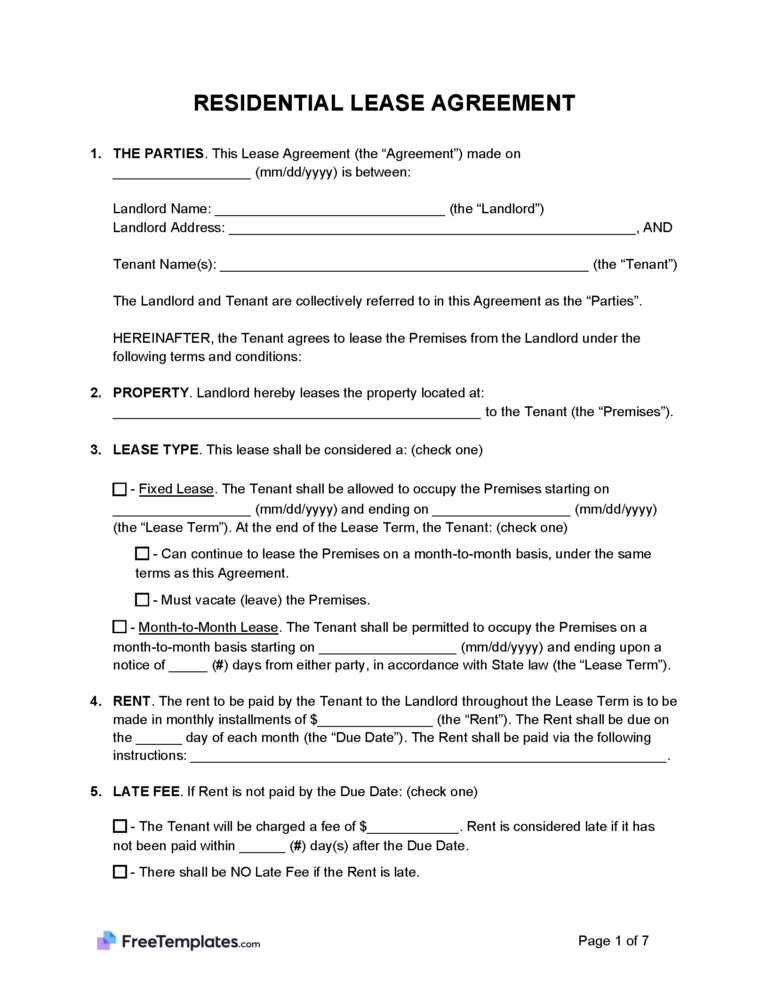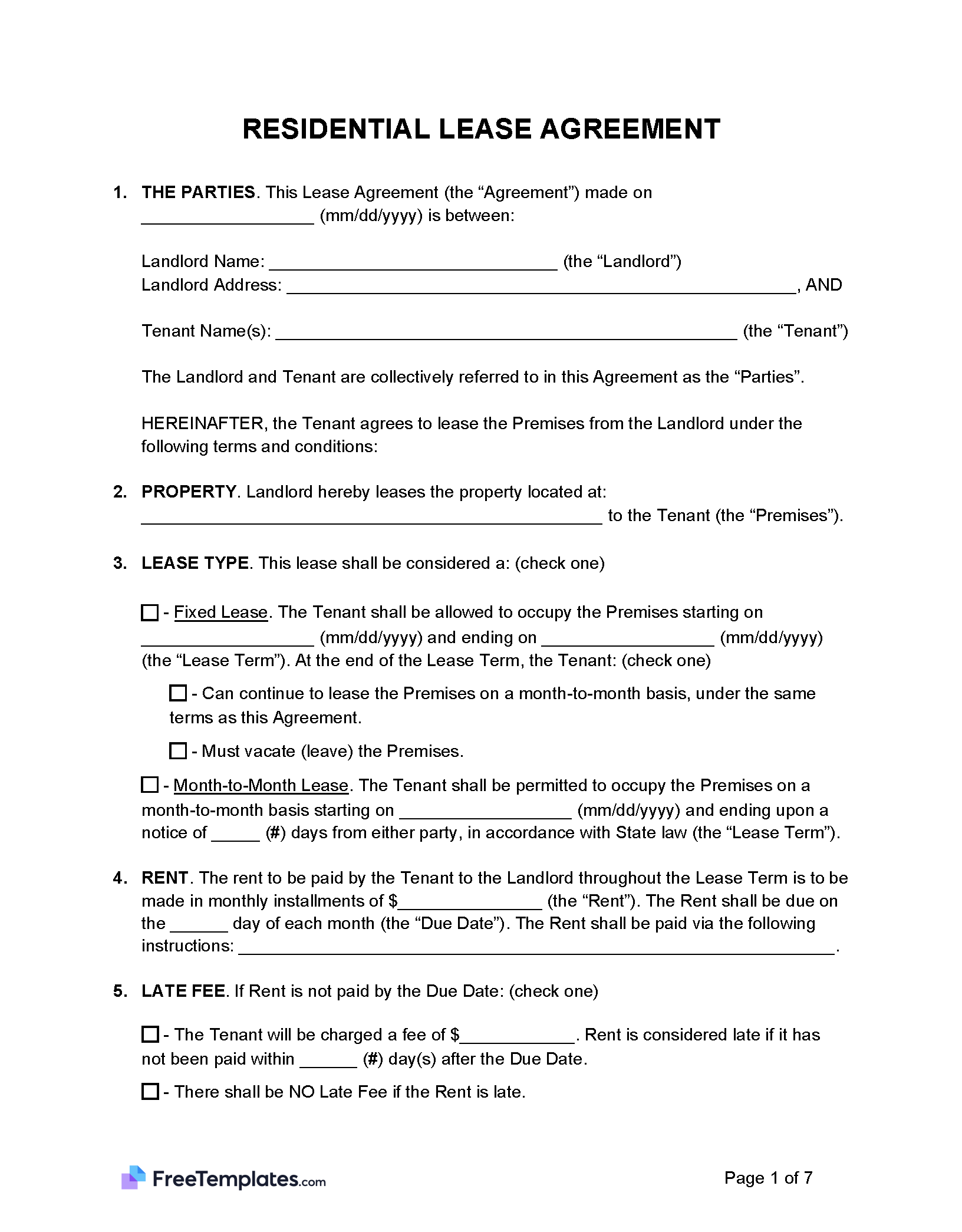By State
- Alabama
- Alaska
- Arizona
- Arkansas
- California
- Colorado
- Connecticut
- Delaware
- Florida
- Georgia
- Hawaii
- Idaho
- Illinois
- Indiana
- Iowa
- Kansas
- Kentucky
- Louisiana
- Maine
- Maryland
- Massachusetts
- Michigan
- Minnesota
- Mississippi
- Missouri
- Montana
- Nebraska
- Nevada
- New Hampshire
- New Jersey
- New Mexico
- New York
- North Carolina
- North Dakota
- Ohio
- Oklahoma
- Oregon
- Pennsylvania
- Rhode Island
- South Carolina
- South Dakota
- Tennessee
- Texas
- Utah
- Vermont
- Virginia
- Washington
- Washington D.C.
- West Virginia
- Wisconsin
- Wyoming
By Type (6)
| Standard Lease Agreement – A fixed term lease commonly for a one-year period. |
| Commercial Lease Agreement – To rent property for any business or non-residential use. |
| Month-to-Month Lease Agreement – For tenancies that can be terminated at any time with one month’s notice. |
| Rent-to-Own Agreement – A lease that offers the option for the tenant to buy the property. |
| Roommate Agreement – A legally binding contract between the tenants on a property. |
| Sublease Agreement – For a tenant seeking to re-rent the property to someone else (subtenant). |
How to Write a Lease
Tenant Requirements (pre-lease)
- Rental Application – Provides information about the tenant and obtains their consent for a credit check.
- Proof of Income – Pay stubs, bank statements, or a letter from an employer.
- Government-issued ID – Such as a driver’s license or passport.
- Credit Report – To view any current debts or liabilities.
- References – To contact past landlords.
1. Basic Information
- Parties Involved
- Landlord (lessor) – The owner or manager of the property.
- Tenant (lessee) – The individual renting the property.
- Occupant – A person who resides on the property but is not the tenant (e.g., partner, family, etc.)
- Property Description
- Property Description – The street address of the property, including the number of bedrooms and bathrooms.
- Appliances – Such as refrigerators, microwaves, dishwashers, etc.
- Furnishings – Furniture provided by the landlord.
- Amenities – Such as fitness areas, swimming pools, parking, etc.
2. Rental Terms
- Lease Term – Start and end dates (commonly one year).
- Move-in Date – When the tenant can take occupancy.
- Pro-Rated Rent – If the tenant moves in early, it is the pro-rated rent the tenant will owe.
- Renewal – The terms on how the lease can be extended.
- Rent – The amount the tenant pays each month.
- Payment Instructions – The acceptable payment methods.
- Late Fees – Penalty if rent is not paid on the due date.
- Other Fees – If any other fees are required, the tenant must pay them at the start of the lease or each month.
- Security Deposit – An amount held by the landlord and refunded at the end of the lease (commonly one month’s rent).
- Deposit Location – In some jurisdictions, it is required to disclose where the deposit is being held in a receipt.
- Deductions – What is permitted to be deducted from the security deposit at the end of the lease term.
- Returning – The conditions for refunding the deposit to the tenant.
3. Landlord’s Responsibilities
- Compliance with Laws – To ensure the property meets all building codes from local agencies.
- Maintenance – Any property repairs or maintenance.
- Pest Control – The eradication of bed bugs or other infestations.
- Utilities & Services – Any utilities covered by the landlord.
4. Property Rules
- Abandonment – If the tenant leaves the property for a specified time period.
- Guest Policy – The maximum number of guests allowed on the property and how long they can stay.
- Landlord’s Entry – The landlord’s process to enter the property for non-emergencies.
- Parking – Where tenants can park their vehicles and if a fee is required.
- Pets – If pets are allowed and any restrictions or deposits are required.
- Sanitary Condition – Maintaining a level of cleanliness.
- Smoking Policy – Whether allowed inside the property and which types of products.
- Subletting – Whether or not the tenant can re-rent (sublet) the property.
5. Addendums & Disclosures
- Co-Signer Addendum – Allows someone else to assume financial responsibility for the lease if the tenant fails to meet their obligations.
- Lead-Based Paint Disclosure & EPA Pamphlet – If the residence was constructed before January 1, 1978, the tenant must be made aware of the risk hazards of lead-based paint.
- Move-In Checklist – Both the landlord and tenant must complete and confirm the property’s condition on move-in and move-out (to protect the tenant’s security deposit).
- State-Specific Disclosures – If there are any required disclosures under State law, it should be mentioned in the lease.

